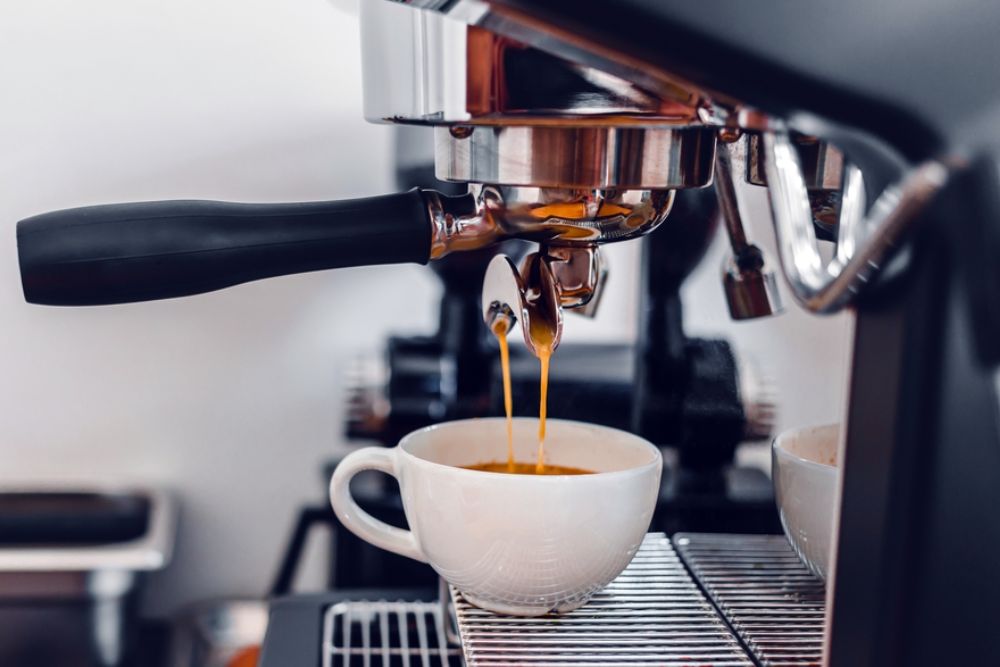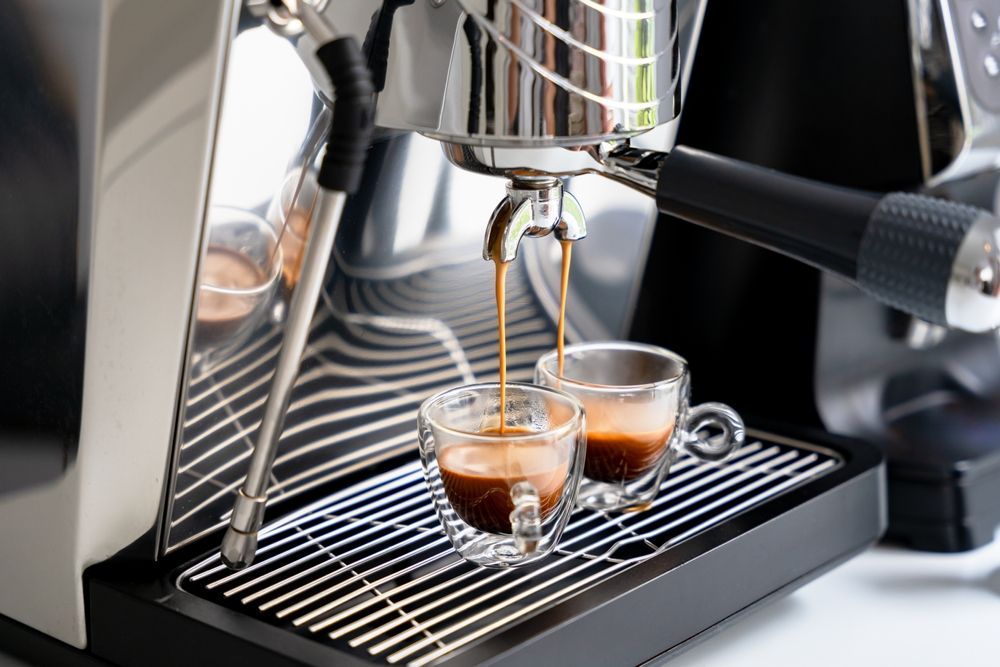Whether you’re a coffee aficionado or just love a morning shot of bold espresso, having your own espresso machine can be a game-changer. But not all machines are created equal—while some deliver full control over every aspect of the brewing process, others automate tasks for convenience. From budget concerns to maintenance requirements, this guide will walk you through the essential points to consider before making that investment. By the end, you’ll feel more confident in choosing an espresso machine that suits your taste, skill level, and kitchen setup.
1. Clarify Your Espresso Needs and Preferences
Why It Matters
A lavish espresso machine can be satisfying but may be overkill if you prefer simpler coffee beverages. On the other hand, if you’re craving café-level control at home, a more advanced machine might be worth the investment.
Questions to Ask
- Daily Usage: Will you be pulling just one or two shots each morning, or do you plan on serving friends and family regularly?
- Beverage Types: Are you purely an espresso purist, or do you love cappuccinos, lattes, or flat whites that require a steaming wand?
- Time and Convenience: Do you enjoy the ritual of manually grinding, tamping, and pulling shots, or is a push-button automatic approach more appealing given your busy mornings?
Takeaway
Identifying how many drinks you make, how specialized those drinks are, and how hands-on you want to be is the first step toward deciding whether you need a manual, semi-automatic, super-automatic, or capsule-based espresso machine.
2. Different Types of Espresso Machines
Why It Matters
Machines vary in terms of automation, functionality, and the level of skill required. Knowing these categories helps you zero in on what suits your routine and coffee brewing skills.
Key Types
- Manual (Lever) Machines
- How It Works: You control water pressure by operating a lever. This offers maximum hands-on control but demands skill.
- Who It’s For: Enthusiasts wanting the full barista-like experience and fine-tuning each shot.
- Semi-Automatic Machines
- How It Works: You grind beans, tamp the portafilter, and start/stop the pump manually. The machine regulates the boiler temperature and pressure.
- Who It’s For: Intermediate or dedicated beginners seeking control without the complexity of a lever machine.
- Automatic and Super-Automatic Machines
- How It Works: Automatic machines stop water flow at a set volume; super-automatics even grind beans, tamp, and brew with minimal user input.
- Who It’s For: Busy coffee lovers prioritizing convenience and consistency over manual artistry.
- Capsule/Pod Machines
- How It Works: Single-serve pods are inserted into a slot, and the machine automates the rest. Quick and tidy but limited to specific brand pods.
- Who It’s For: Ultra-convenience seekers preferring consistent shots with minimal cleanup.
Takeaway
Balancing convenience, customization, and budget helps you decide. Manual machines require more time and skill, but can produce highly personalized espresso; super-automatics handle the heavy lifting at the expense of some flexibility.
3. Key Features and Components
Why It Matters
Beyond the basic type, subtle design aspects—like boiler setup, portafilter size, and steaming capability—affect the machine’s performance and the quality of your espresso shots.
Crucial Features
- Boiler Type
- Single Boiler: Cheaper, smaller machines often have a single boiler for both espresso extraction and steaming milk, meaning you can’t do both simultaneously.
- Heat Exchanger/Double Boiler: Allows brewing espresso and steaming milk at the same time with consistent temperature control. Usually found in mid-range or higher-end machines.
- Temperature Stability
- Important for flavor consistency, as water temperature directly affects espresso taste. Higher-end machines often have PID controllers for precise temperature management.
- Portafilter Size and Material
- Commercial standard is usually 58 mm. Heavier, robust portafilters (brass or stainless steel) often maintain heat better.
- Steam Wand Design
- If you love lattes or cappuccinos, check if the machine’s wand offers enough power and range of motion to froth milk easily. Some wands are “panarello” style (more automatic), while others let you fully control texturing.
- Pressure Gauge and Indicators
- Visual feedback to help you see if you’re within the ideal extraction pressure range (around 9 bars for espresso).
Takeaway
Focus on consistent temperature, a capable portafilter, and if steaming milk is key to your drinks, ensure a strong steam wand. These features can define the difference between a “just okay” and an exceptional espresso experience.

4. Grinder Considerations
Why It Matters
Espresso is highly sensitive to grind size. Poorly ground beans can lead to weak or bitter shots. Some machines come with built-in grinders (super-automatic), while others require a separate burr grinder.
Points to Note
- Burr vs. Blade Grinders: Burr grinders produce consistent particle sizes, essential for espresso. Blade grinders often yield uneven grounds leading to inconsistent extraction.
- Built-In Grinder: Super-automatics and some high-end machines incorporate a built-in burr grinder, simplifying the process but limiting brand/quality choices.
- Buying Separately: Offers flexibility and potential to get a better grinder, but it means additional cost and counter space.
Takeaway
If your chosen machine lacks a built-in grinder, invest in a good quality burr grinder. The difference in shot quality with proper grind consistency is significant, especially for espresso.
5. Maintenance and Cleaning
Why It Matters
Espresso machines can be demanding in terms of daily upkeep—backflushing, descaling, and cleaning the portafilter or steam wand. Neglecting maintenance can degrade flavor and shorten the machine’s lifespan.
Maintenance Routine
- Daily: Rinse portafilter, wipe steam wand, run a quick water flush through the group head to remove coffee residue.
- Weekly: Backflush with a detergent (if applicable) to clear internal oils. Clean drip trays and water reservoirs thoroughly.
- Monthly or Periodic: Descale depending on water hardness. Check gaskets and seals for wear.
- Filters and Water: If your water is hard, consider a filter or use bottled water. Scale buildup can hamper boiler function.
Takeaway
Before purchasing, assess your willingness to do regular cleaning. Machines with simpler access or auto-clean cycles might suit those wanting less fuss.
6. Budget and Brand Considerations
Why It Matters
Prices range from under $100 for basic manual or capsule machines to over $2,000 for prosumer or high-end models. Beyond cost, brand reputation can indicate reliability, parts availability, and build quality.
Budget Tips
- Entry-Level: Capsules or simple semi-automatic machines can cost under $200–$300. Good for a casual introduction, though less robust or flexible.
- Mid-Range: $500–$1,000 often yields better temperature stability, decent steam power, and more durable construction. Great for intermediate home baristas.
- High-End/Prosumer: Over $1,000 for powerful boilers, advanced temperature control, and commercial-grade components. This bracket suits passionate espresso enthusiasts or those wanting near-café quality at home.
Brands to Explore
- Beginner: De’Longhi, Mr. Coffee, or Nespresso (capsule systems).
- Intermediate: Gaggia, Breville, or Rancilio.
- Advanced: Rocket Espresso, La Marzocco (Linea Mini), Profitec, or ECM.
Takeaway
Align your budget with how committed you are to espresso quality and daily usage. Quality brand machines often come with better support, spare parts, and longevity.
7. Practical Testing and Research
Why It Matters
Reading specs online is one thing, but actually feeling how the machine operates can clarify comfort in daily use—how the steam wand moves, ease of removing portafilters, and overall sturdiness.
Testing Tips
- Demo or Showroom: If possible, visit a store or specialty coffee shop to see demonstration units. Ask the staff for a short test if feasible.
- Online Reviews: Look for user experiences about reliability, maintenance quirks, or design flaws.
- Return Policies: Some retailers have a generous return window if the machine fails to meet your expectations, though be mindful of usage constraints.
Takeaway
Hands-on experience or reading detailed user feedback can prevent regrets. Each brand and model has nuanced pros/cons in real-world daily usage.
Selecting an espresso machine involves balancing your desire for barista-level control, budget constraints, and the practicalities of daily maintenance. From manual lever machines that offer hands-on artistry to super-automatics that churn out cappuccinos at the press of a button, there’s a wide spectrum of choices. Think carefully about your personal coffee style—straight espresso or milky drinks—along with how much time you’ll devote to grinding, steaming, and cleaning.
Paying attention to essentials like boiler type (for consistent temperature), quality grinder (for accurate extraction), and brand reputation can ensure not just better espresso but also a smoother ownership experience. Whether you’re a budding coffee enthusiast exploring your first machine or a seasoned connoisseur upgrading to pro-level gear, investing in the right espresso setup can elevate your mornings and dazzle guests—delivering café-quality shots in the comfort of home. Enjoy the journey toward achieving that perfect crema!



